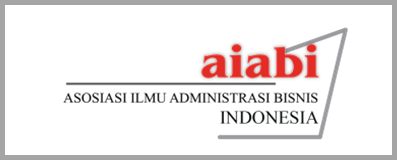Public Knowledge and Private Gain: The Effect of Spillover Networks on Firms' Innovative Performance
DOI:
https://doi.org/10.31334/bijak.v19i1.1973Keywords:
innovation, knowledge spillovers, interorganizational learning, science intensity, downstream integration, semiconductor industryAbstract
This research cores around presenting the idea of an overflow organization, to be specific an organization of source organizations whose public information is a getting organization that can be ingested and utilized as advancement input. The review was led utilizing patent-put together information with respect to a board of semiconductor organizations somewhere in the range of 1976 and 2002. The outcomes show that the imaginative presentation of the organization will in general be higher when the overflow network is plentiful or wealthy in underlying openings. Notwithstanding, great overflow organizations and opening wealth are primary for the most part counterproductive. It is steady with information that the worth of outer information inputs relies upon the venture level assets that can be pooled. Organizations benefit from overflow networks that rely upon specific variables, specifically intraorganisasi logical force and level of incorporation into (downstream).
References
Ahuja, G. 2000. Collaboration networks, structural holes, and innovation: A longitudinal study. Administrative Science Quarterly, 45: 425-455.
Audretsch, D.B., Belitski, M., Caiazza, R. 2021. Start ups, Innovation and Knowledge Spillovers. The Journal of Technology Transfer.
Baum, J. A. C., Calabrese, T., & Silverman, B. S. 2000. Don’t go alone: Alliance network composition and startups’ performance in Canadian biotechnology. Strategic Management Journal, 21: 267-294.
Caldas., L.F.D.P., Paula, F.F.O., dan Silva, J.F.D. 2021. The Effects Of Knowledge Spillovers And Alliance Portfolio Diversity On Product Innovation And Firm Growth. International Journal of Innovation Management. (2021):2150051.
Hamel, G. 1991. Competition for competence and inter-partner learning within international strategic alliances. Strategic Management Journal, 12: 83-103.
Hoang, H., & Rothaermel, F. 2005. The effect of general and partner-specific alliance experience on joint R&D project performance. Academy of Management Journal, 48: 332-345.
Lane, P. J., & Lubatkin, M. 1998. Relative absorptive capacity and interorganizational learning. Strategic Management Journal, 19: 461-477.
Operti, E. dan Carnabuci, G. 2014. Public Knowledge, Private Gain: The Effect Of Spillover Networks On Firms’ Innovative Performance. Journal of Management. 40(4): 1042-1074.
Powell, W. W., Koput, K., & Smith-Doerr, L. 1996. Interorganizational learning and the locus of innovation: Networks of learning in biotechnology. Administrative Science Quarterly, 41: 116-145.
Rowley, T., Behrens, D., & Krackhardt, D. 2000. Redundant governance structures: An analysis of structural and relational embeddedness in the steel and semiconductor industries. Strategic Management Journal, 21: 369-386.
Yang, H., Phelps, C., & Steensma, H. K. 2010. Learning from what others have learned from you: The effects of knowledge spillovers on originating firms. Academy of Management Journal, 53: 371-389.
Downloads
Published
Issue
Section
License

This work is licensed under a Creative Commons Attribution-ShareAlike 4.0 International License
Please find the rights and licenses in Majalah Ilmiah Bijak By submitting the article/manuscript of the article, the author(s) agree with this policy. No specific document sign-off is required.
- License
The commercial use of the article will be governed by the Creative Commons Attribution license as currently displayed on Creative Commons Attribution-ShareAlike 4.0 International License.
2. Author(s)' Warranties
The author warrants that the article is original, written by stated author(s), has not been published before, contains no unlawful statements, does not infringe the rights of others, is subject to copyright that is vested exclusively in the author and free of any third party rights, and that any necessary written permissions to quote from other sources have been obtained by the author(s).
3. User Rights
Majalah Ilmiah Bijak spirit is to disseminate articles published are as free as possible. Under the Creative Commons license, Majalah Ilmiah Bijak permits users to copy, distribute, display, and perform the work for non-commercial purposes only. Users will also need to attribute authors and Majalah Ilmiah Bijak on distributing works in the journal and other media of publications.
4. Co-Authorship
If the article was jointly prepared by more than one author, any authors submitting the manuscript warrants that he/she has been authorized by all co-authors to be agreed on this copyright and license notice (agreement) on their behalf, and agrees to inform his/her co-authors of the terms of this policy. Jurnal Bijak will not be held liable for anything that may arise due to the author(s) internal dispute. Majalah Ilmiah Bijak will only communicate with the corresponding author.
5. Miscellaneous
Majalah Ilmiah Bijak will publish the article (or have it published) in the journal if the article’s editorial process is successfully completed. Jurnal Bijak editors may modify the article to a style of punctuation, spelling, capitalization, referencing and usage that deems appropriate. The author acknowledges that the article may be published so that it will be publicly accessible and such access will be free of charge for the readers as mentioned in point 3.
Every accepted manuscript should be accompanied by "Copyright Transfer Agreement"prior to the article publication.





1.png)




